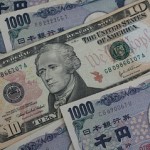The euro soared to a new 23-month high against the US dollar on Thursday, as signs that US growth might have been shaved by the partial government shutdown, bolstered speculation that the Federal Reserve Bank may postpone the scaling back of its monetary stimulus until 2014.
EUR/USD hit a session high at 1.3822 at 6:30 GMT, also the pairs highest point since November 2011, after which consolidation followed at 1.3812. Support was likely to be received at October 23rd low, 1.3742, while resistance was to be met at November 9th 2011 high, 1.3858.
The partial government shutdown in the United States, which began on October 1st and ended on October 17th, probably cut 0.25% from nations economic growth and also cost 120 000 jobs in October, according to President Barack Obama’s chief economic adviser.
The greenback also tumbled sharply against its major peers on Tuesday, after the Department of Labor in the United States reported, that employers in the country added fewer than projected job positions in the month of September. This data could probably urge the Federal Reserve Bank to maintain the current pace of its stimulus program until March next year, a survey of experts showed. The central bank, contrarily to expectations, abstained from reducing the scale of the 85 billion USD per month of asset purchases at its most recent policy meeting in September, as it wanted more evidence of economic recovery to be obtained.
Later in the day another report might reveal that the number of continuing jobless claims in the United States rose to 2.87 million during the week through October 12th from 2.86 million a week ago. On the other hand, according to the median estimate by experts, the initial jobless claims in the country probably fell to 340 000 during the week ended on October 19th from 358 000, as reported in the preceding week.
Meanwhile, another impulse that spurred demand for riskier assets came out of China, with the preliminary value of its manufacturing PMI rising to 50.9 in October and marking its highest point in seven months. Analysts expectations have been exceeded. This data eased to a certain extent concerns over Chinese economic development, after yesterday sentiment was influenced by speculation that Chinese central bank would tighten its monetary policy to curb inflation rate. The euro also reacted to this news.
Last but not least, a string of crucial PMIs in the sectors of manufacturing and services was expected to be released out of the Euro zone within the next hour, as in case experts projections are surpassed the euro may receive additional support.
Elsewhere, the euro was steady against the sterling, as EUR/GBP cross dipped 0.04% to trade at 0.8522. EUR/JPY pair was gaining 0.11% on a daily basis to trade at 134.32.





